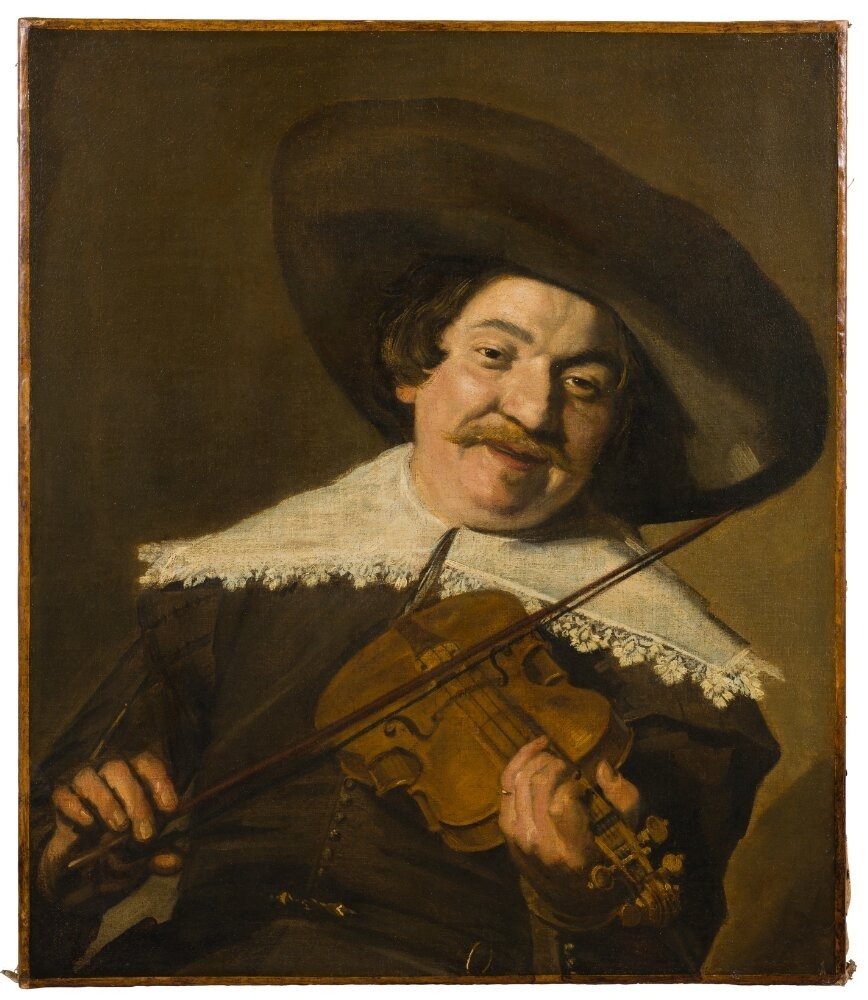
I am at a new art exhibition. In room after room I stare at soberly dressed Protestant men and women – all in black, with white ruff collars. The women’s hair is neatly tucked under their modest caps. They are wealthy, but their display is a carefully calibrated show of sober affluence. On press day I see my fellow journalists grinning with delight.
Four hundred years after they lived, why do these strangers with their fundamentalist religious beliefs connect so powerfully to so many viewers and fill us with joy? The cause of these unexpected emotions is the 17th century Dutch portrait artist Frans Hals, best known for his painting of the so-called “Laughing Cavalier”. Now 50 of his portraits populate the European art show of the winter. Currently at London’s National Gallery, it will head to the Gemäldegalerie in Berlin and Rijksmuseum in Amsterdam, not far from his native Haarlem.
Part of the fun is their unexpectedly modern stance. Many of the men are standing with a hand on their hip, the power pose of the modern selfie. One of the women (Cunera van Baersdorp) even holds the pose – a remarkably bold statement for the time. Many are smiling; one man is tipping the legs of his chair back, as if caught in an analogue photo burst of oil on canvas. Another (“A Man in a Slouch Hat”) leans across the back of a chair; a pose that continues to inspire celebrity portraits to this day. I think of the famous 1963 Lewis Morley photo of the young Christine Keeler, sitting naked astride a chair.
Keeler is still on my mind when I cross London to see Rubens & Women – an exhibition of Hals’s contemporary Peter Paul Rubens, at the Dulwich Picture Gallery. Catholic where Hals was Protestant, Rubens focused on classical mythological scenes, populated by naked goddesses. The show tries to challenge our narrow, modern focus on the voluptuous or “Rubenesque” form of his female nudes.
There is certainly power in these women. “Diana Returning from the Hunt”, a breast exposed and quietly defiant of the leering satyrs in the painting, is recognisably the face of his beloved first wife Isabella Brant. His (fully clothed) portraits of his powerful female patrons, such as Marchesa Maria Serra Pallavicino, have the same rich warmth and quiet intelligence as beams out of Hals’ work. But my modern sensibilities cannot overcome deep unease to know his second wife, Helena Fourment, painted so often coquettishly and unclothed – who, according to one critic, “revitalised” him at 53 – was just 16 at the time of their wedding.
How apt that another great painter of portraits and mythological scenes currently in the headlines, a contemporary of Rubens and Hals, is a woman. Only days before the Hals and Rubens exhibitions opened in London, Historic Royal Palaces announced that they’d rediscovered a painting by Artemisia Gentileschi at Hampton Court Palace. It had been wrongly attributed to the “French school” for a hundred years.
Like both her male contemporaries, the Italian portraitist Gentileschi was hugely successful in her lifetime, and came to London to paint for the court of Charles I. However, after her death she was forgotten for centuries. Since feminist art historians began championing her work in the 1970s, she has re-emerged to huge popularity among modern art lovers.
The rediscovered painting, “Susannah and the Elders”, is a grand Biblical scene of the kind that rich male patrons commissioned from the likes of Rubens. This Old Testament story of sexual harassment by powerful men was a common subject for painters at the time. But unlike many versions of this story, there is nothing voyeuristic about Gentileschi’s presentation. On the contrary, the focus is on the intrusion of the men. She had painted the subject before – her first known solo work.
Her other famous subject was the apocryphal Jewish heroine Judith beheading the Assyrian general Holofernes, holding him down with determination and the help of another woman. Gentileschi’s images speak more powerfully than ever across the centuries. Not least because we know from surviving court records that she gave evidence at the trial of her rapist, a painter and a friend of her father. The attack took place when she was just 17, the same year she completed that first solo work.
Three different Old “Masters”. It took the chance of encountering all three in the space of a few days for me to see afresh how they could defy time and speak to us about joy, about love and about survival.
This article is from New Humanist's winter 2023 issue. Subscribe now.

